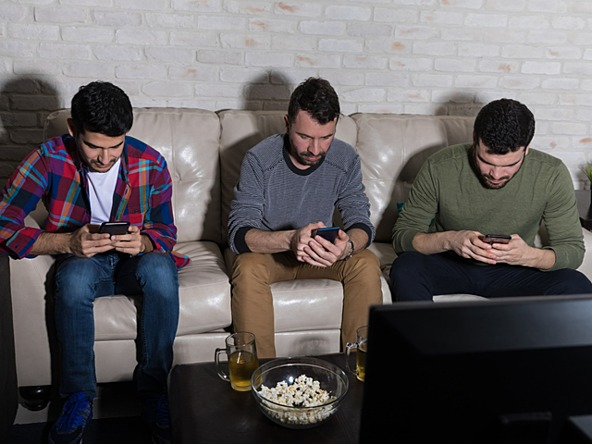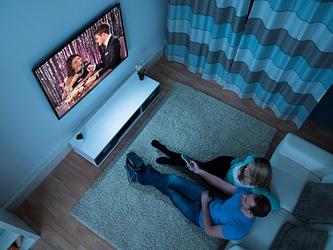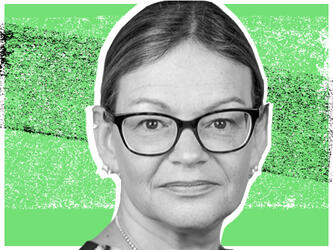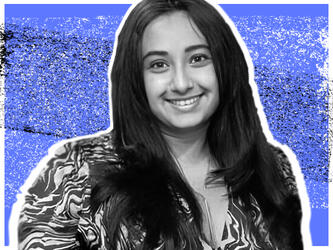Attention deficit: how to increase advertising effectiveness

Last year, for the first time ever, the IPA reported that UK adults consumed more digital media than offline media. The findings identified an issue that brands and marketers are only too familiar with – despite viewing and reading more content, people are switching their attention between screens, dodging ads whenever they can. In fact, some 81% admitted to skipping when given the opportunity.
Which is why the concept of ‘attention’ has swiftly dominated headlines throughout our industry. With so much content occupying people’s attention, just how do brands get the cut-through they need for their ads? And how can marketers use attention to inform their media investments?
Fortunately, industry research around this topic has increased, spearheaded by Lumen and Ebiquity’s 2021 report, which sought to identify a combined metric for measuring attention on TV and digital media. This study was integral in advancing our understanding of how different media channels hold consumer attention and supporting our belief that planning for media attention can create an advantage over competitors, thereby increasing the effectiveness of advertising.
Drawing from the Lumen/Ebiquity studies and IPA touchpoints, we compiled our Planning for attention in a fragmented landscape report, and approached the debate through a planning lens. In this way, we could better understand how attention varies by channel, audience and times of the day to craft media plans to maximise the impact of our client’s budgets.
The meaning of methodology
Fred Bonner, professor of media and advertising research at the University of Amsterdam, found that relaxed individuals noticed 56% of advertising, compared with stressed subjects who only noticed 36%. Taking inspiration from this and other social science of behaviour economics, we set our sights on isolating attention in media planning to understand how we might reach individuals when they’re most relaxed – and therefore attentive – and when exactly this might be.
But this decision was not without its drawbacks. While we can use existing tools to isolate people’s attentiveness and channels, the tool assumes that all channels are equal at holding consumers’ attention – which is of course not the case. For example, compare TV’s ability to hold attention for complex stories with the shorter attention span held by billboards, where humour is effective.
Using IPA Touch Points, we found that of the 117 hours spent consuming media each week by UK adults, over half of the time ( 54%) they were feeling relaxed and unengaged in any other activity. This data led us to create a planning tool that allows us to select audiences and channels, best suited to campaign objectives, and isolate when and where we might reach consumers throughout the week to increase advertising impact.
How to select the right channel
When we isolated the media channels to rank effectiveness, it came as no surprise to us that TV holds the greatest share of our undivided attention – think of the time spent during an evening on the sofa channel surfing. But second to TV was Snapchat. It may be a surprise to some that TikTok, Twitter and Instagram see just as many attentive hours as those spent on Facebook and OOH.
Social media platforms like TikTok, YouTube and Snapchat drive the highest percentage of undivided attention among their viewers. In fact, the proportion of time attentive with traditional TV is only 58%, so if attention is the goal, then streaming is a more effective environment with 67%.
Age segmentation pointed to 18-24s spending the most time with media when relaxed and unbothered. It’s no shock that you get busier as you get older, and the results revealed that our attention is increasingly restricted until the ages of 55-64 (when retirement kicks in). Other notable trends included attentive hours of traditional TV increasing with age, rising to 18 hours per week for 65-74s in particular. An audience focus is integral when planning for attention; some divide evenly across multiple channels, while others have a limited attention capacity in general.
Attention also differs greatly by day of the week and even time of day. For example, YouTube, Instagram, Twitter and radio see higher attention at the weekend, while Snapchat and Press see higher attention during the weekdays, reflecting both the older and younger audiences who are more likely to be at home Monday to Friday. The best times of the day for attention are outside traditional work hours (after 6pm).
Knowing that of 117 hours spent with media per week in the UK, only 63 hours are spent undistracted, what can brands do to get the cut-through they need?
First, choose channels with a higher percentage of time spent undistracted. Second, know your audience and from that you can determine their preferred channels and the times they’re available to engage attentively with the media. Finally, don’t be afraid to get personal. If you’re using a channel with a higher likelihood of distraction, factor this into the creative execution by personalising the message or leaning on your strong brand assets.
James Smith is managing director of The Kite Factory

We hope you enjoyed this article.
Research Live is published by MRS.
The Market Research Society (MRS) exists to promote and protect the research sector, showcasing how research delivers impact for businesses and government.
Members of MRS enjoy many benefits including tailoured policy guidance, discounts on training and conferences, and access to member-only content.
For example, there's an archive of winning case studies from over a decade of MRS Awards.
Find out more about the benefits of joining MRS here.













0 Comments